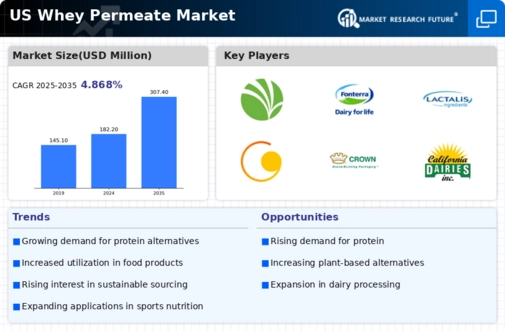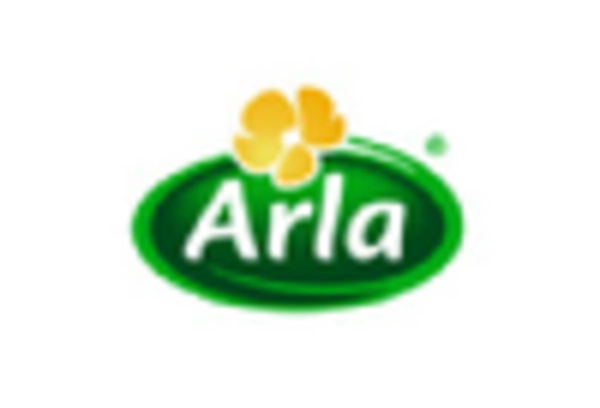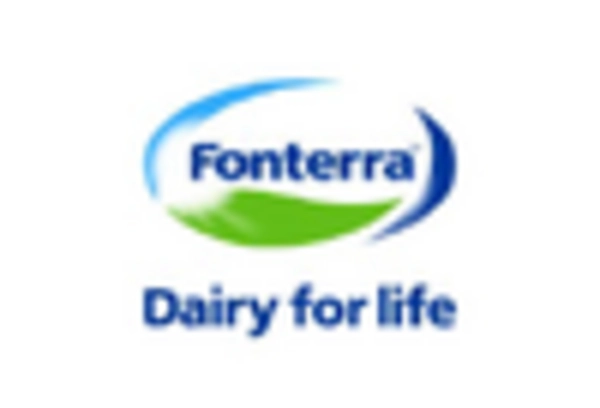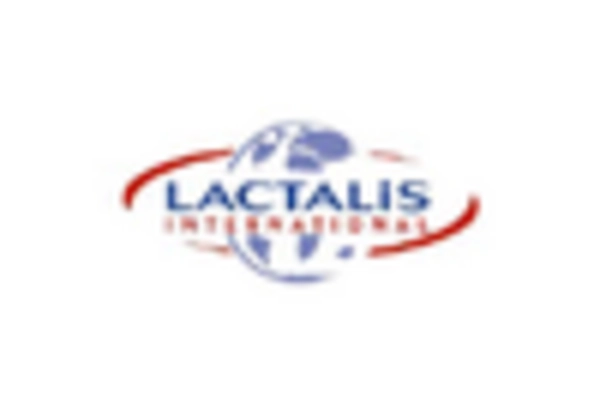Increasing Use in Food Products
The whey permeate market is experiencing a notable increase in demand due to its incorporation into various food products. As manufacturers seek to enhance the nutritional profile of their offerings, whey permeate serves as a cost-effective ingredient that provides essential nutrients. In 2025, the US market for whey permeate in food applications is projected to reach approximately $200 million, reflecting a growth rate of around 15% annually. This trend is driven by the rising popularity of protein-enriched foods and beverages, which are appealing to health-conscious consumers. The versatility of whey permeate allows it to be utilized in dairy products, baked goods, and snacks, thereby expanding its market reach. Consequently, the increasing use of whey permeate in food products is a significant driver for the whey permeate market.
Expansion of E-commerce Channels
The whey permeate market is experiencing a transformation due to the expansion of e-commerce channels. As online shopping becomes increasingly prevalent, manufacturers are leveraging digital platforms to reach a broader audience. This shift is particularly beneficial for niche products like whey permeate, which may not be widely available in traditional retail outlets. In 2025, the US e-commerce segment of the whey permeate market is projected to grow by approximately 20%, driven by the convenience and accessibility that online shopping offers to consumers. This trend indicates a significant opportunity for manufacturers to enhance their market presence and cater to the evolving purchasing behaviors of consumers. Thus, the expansion of e-commerce channels is a key driver for the whey permeate market.
Growth in Animal Feed Applications
The whey permeate market is also benefiting from its growing application in animal feed. As the livestock industry continues to expand, there is a rising demand for high-quality feed ingredients that can enhance animal growth and health. Whey permeate, rich in lactose and proteins, is increasingly being used as a feed additive, particularly in the dairy and poultry sectors. In 2025, the market for whey permeate in animal feed is estimated to be valued at around $150 million, with a compound annual growth rate (CAGR) of approximately 12%. This growth is attributed to the need for sustainable and cost-effective feed solutions that can improve feed efficiency and overall animal performance. Thus, the growth in animal feed applications is a crucial driver for the whey permeate market.
Technological Advancements in Processing
Technological advancements in the processing of whey permeate are playing a pivotal role in shaping the market landscape. Innovations in filtration and drying techniques have enhanced the quality and functionality of whey permeate, making it more appealing to manufacturers. These advancements allow for the production of whey permeate with improved solubility and flavor profiles, which are essential for various applications. In 2025, the impact of these technological improvements is expected to contribute to a market growth of approximately 8%, as companies seek to optimize their production processes. Consequently, the ongoing technological advancements in processing are a vital driver for the whey permeate market.
Rising Interest in Nutritional Supplements
The whey permeate market is witnessing a surge in interest from the nutritional supplements sector. As consumers increasingly prioritize health and wellness, the demand for protein supplements has escalated. Whey permeate, being a rich source of protein, is gaining traction among manufacturers of dietary supplements. In 2025, the market for whey permeate in nutritional supplements is projected to reach approximately $100 million, with a growth rate of around 10% annually. This trend is further fueled by the increasing awareness of the benefits of protein consumption for muscle recovery and overall health. The incorporation of whey permeate into protein powders and bars is becoming more prevalent, thereby driving the whey permeate market forward.

















Leave a Comment